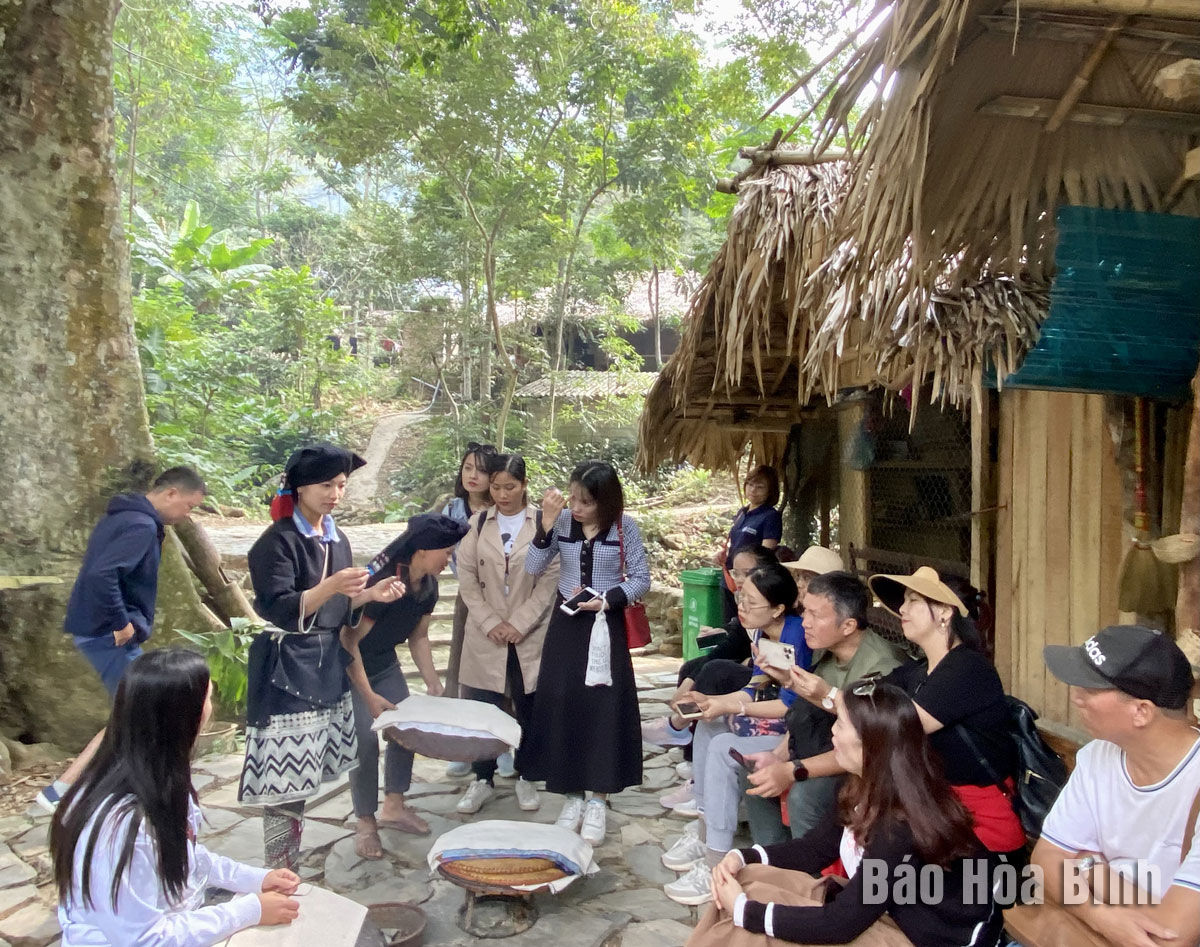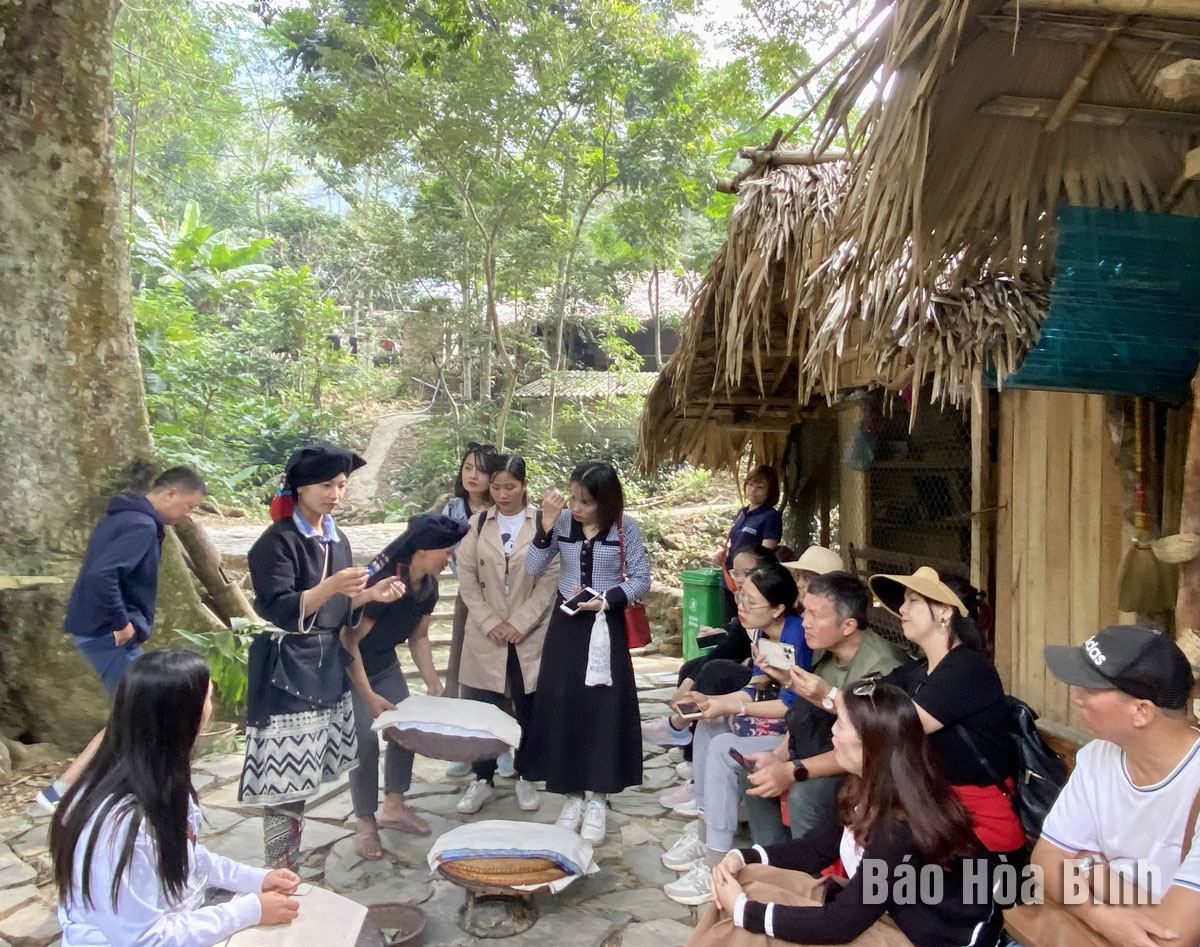
Da Bac district boasts pristine and majestic natural landscapes and is home to five ethnic groups of Muong, Tay, Dao, Kinh, and Thai. It is included in the master plan on the development of the National Hoa Binh Lake Tourist Area by 2030, providing favourable conditions for tourism development, especially community-based.
Travellers experience traditional crafts at Sung hamlet,
Cao Son commune, Da Bac district.
Beauty of community tourism site in Duc Phong hamlet, Tien Phong commune, Da
Bac district next to Hoa Binh lake. Homestay facilities at community tourism site in Doan Ket hamlet, Tien Phong
commune, Da Bac district, ensure standard accommodation for tourists.
Coming to Da Bac, tourists could explore and stay at community tourism sites in
Ke hamlet, Hien Luong Bay in Hien Luong commune, which is a branch of Hoa Binh
lake. They could experience the unique culture of the Muong people along with
the picturesque natural scenery, join exciting activities such as bamboo
rafting, kayaking, and enjoy cuisine with distinctive flavors.
About 38km from the district centre is Duc Phong village, formerly known as Da
Bia in Tien Phong commune – a destination for tourists seeking relaxation and
exploration of the life of the Muong Ao Ta ethnic community in the highland
region. With high-quality services provided by local residents, this tourist
spot was honoured with the "ASEAN Community-Based Tourism" award at
the ASEAN Tourism Forum (ATF) in 2019.
Doan Ket hamlet in Tien Phong commune is home to 28 Muong ethnic households
living along the banks of Hoa Binh lake. The hamlet boasts beautiful natural
landscapes, creating a perfect harmony of skies, mountains, lakes, and village
life of locals.
Tourists would find it hard to overlook the community-based tourism site in
Sung hamlet where the Dao Tien ethnic group in Cao Son commune is living. The
hamlet is situated at an altitude of about 530m, with the majestic Bieu
mountain range behind and terraced fields stretching along the hillside in
front, forming a stunning picturesque landscape.
According to Director of the Da Bac Community-Based Tourism JSC Dinh Thi Hao,
there are currently three hamlets in the district developing community-based
tourism with 13 households providing homestay services. This initiative has
attracted over 180 members from 142 households joining various teams and groups
that offer community-based tourism services. After 8 years of formation and
development, with the support of the Australian Foundation for the Peoples of
Asia and the Pacific (AFAP) in Vietnam in infrastructure, technical equipment,
promotion and training for local residents, community-based tourism in Da Bac
has been making rapid and sustainable progress, becoming an ideal destination
for both domestic and foreign tourists.
Located just a 20-minute drive from Hoa Binh City, Ora Hill Farmstay & Glamping Hoa Binh is a captivating new destination nestled in Mo hamlet, Bình Thanh commune, Cao Phong district. Combining farming with leisure, this tranquil retreat is perfect for those seeking balance, joy, and an immersive experience in the expansive beauty of nature.
Muong Bi - Tan Lac is renowned as one of the four famous Muong regions in Hoa Binh province. Blessed by nature with a favourable climate and stunning landscapes, Tan Lac holds great advantages for tourism development. The local tourism industry has made remarkable strides in recent times thanks to the attention and support from the local authorities and sectors.
With its strategic location, well-developed transport network, and diverse soil and climatic conditions, Hoa Binh is emerging as a must-visit destination in Vietnam's northwestern tourism corridor. The province boasts numerous attractions, including the Kim Boi hot springs (Kim Boi district), the Dau Rong cave complex (Cao Phong), the Mai Chau valley (Mai Chau), and the iconic Hoa Binh hydropower plant.
The northern mountainous province of Hoa Binh has been listed among the 71 most beautiful places to visit worldwide by the prestigious US travel magazine Condé Nast Traveller.
Hoa Binh province’s rich natural and cultural resources position it as a prime location for developing community-based tourism (CBT). In recent years, support from central and provincial policies, as well as assistance from non-governmental organisations, have encouraged local ethnic minority and mountainous communities to actively engage in the sector.



